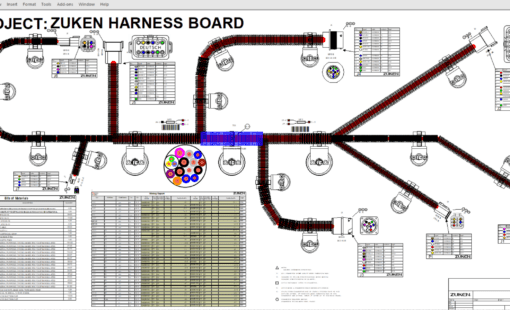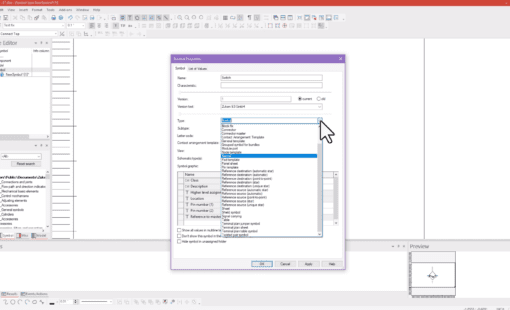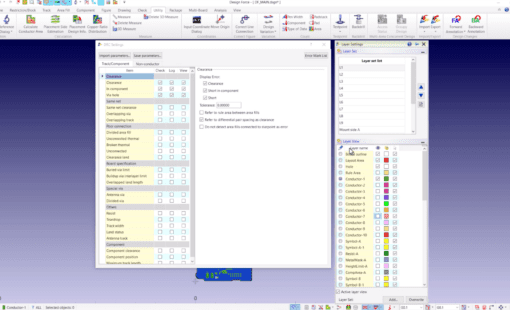Top 10 Blog Posts of 2019 – Only the best of the best.
With 2020 right around the corner, we like to take a look back and see how we did in the last year. We pulled some numbers and looked at what the most popular posts published in 2019 were. As always, we want to give a big shoutout to all of our contributing writers and of course, you the visitor, who make this blog something we continue to be proud of year after year.
We hope you have a happy and safe New Year! Keep in touch – we are excited to show all we have planned for 2020!
10. Controlling the Release Points for Your PLM/PDM System

By Sanu Warrier
The automation or configurability of designs is a goal every team wants to achieve, but most teams haven’t seen success mainly due to not having the right tool to get the job done. Electrical design tools that were once used by a vast number of companies originally came as extensions of mechanical design tools or were very often just basic drafting tools. The ability to create exceptional designs without errors and do it in a fraction of the time required by other tools is the major reason why E3.series is so effective in helping design teams…
9. Zuken’s Leap into Digital Engineering and MBSE

By Bob Potock
You may have heard about Zuken’s recent acquisition of a Model-Based Systems Engineering (MBSE) company called Vitech Corporation. Yes, Vitech has an MBSE product called GENESYS, but first and foremost, they are a Systems Engineering company. Let’s take a look at Zuken’s leap into digital engineering and MBSE to understand the WHY…
8. Exploring Add-on Tools in E3.series – Part 2

By Geoffrey NG
Time is money in the engineering world. Every step in the design process is under increased scrutiny to reduce cycle time while maintaining accuracy while projects grow more complex by the minute. The E3.series software suite offers a number of add-on tools that will increase productivity by facilitating or automating common processes and by offering more intuitive interfaces for design environments.
7. Digital Twins and the Power of Predictive Maintenance

By Sameer Kher
What exactly is a digital twin? It is a simulated model of an actual working product in the field, informed by sensors mounted on the product that gathers and feedback real-time, real-world operating data. By studying the digital twin under actual working conditions, companies can see the product in action, over time, when subjected to the physical environment. This allows the product development team to close the loop on its initial simulations. Engineers can make more informed choices for future designs and make their simulations even more accurate…
6. That’s a Wrap! Zuken Innovation World Americas 2019

By Amy Clements
Back in a January post, I listed some of the top reasons to attend Zuken Innovation World Americas 2019. Now that the conference is over and we’re taking a closer look, I’m pleased to say that we didn’t miss a beat. Here are some of the highlights from the event along with first-hand participant feedback…
5. Exploring Add-on Tools in E3.series – Part 1

By Codie Cobb
In the future, designers will process the entire workflow for developing a product using various software tools. There doesn’t appear to be a comprehensive tool that will cover all requirements of the different disciplines with all their specialties. Considering the rising number of smart tools across the board – cross-functionality is a growing challenge that is bound to get increasingly difficult to resolve. To maintain a best-in-class solution, the connection between these tools is paramount to success…
4. Why do you need a Drawing Notes Manager?

By Sanu Warrier
A great product starts with a great idea and often the pillars of its success are closely related to the design and manufacturing teams. The efficiency of the design to manufacturing process directly corresponds to the profitability and therefore a schematic for an electrical design must be accurately documented and annotated. The Drawing Notes Manager add-on for E3.series aims to make documenting notes and annotations an error-free automated process…
3. Inside Signal Integrity: Impedance Control – Part 2

By Ralf Bruening
In part 1 of this blog we took a back-to-basics approach and discussed line impedance and its effects in signal integrity. As every electrical conductor comprises capacitance, an inductance, and a frequency-dependent ohmic resistance, and with increasing frequencies, these electrical characteristics will influence and distort the signal…
2. Inside Signal Integrity: Impedance Control – Part 1

By Ralf Bruening
Impedance and impedance control belong to the oldest and most often discussed topics in PCB design. They are especially important with high-speed design when related to signal integrity.
In this, the first of a two-part blog, we’ll go back to the basics of impedance/impedance control and consider what influences line impedance. In part two, we’ll set about controlling it.
1. How to Calculate Trace Length from Time Delay Value for High-speed Signals

By Lance Wang
To keep a good high-speed signal quality from driver to receiver on a PCB is not an easy task for designers. One of the most challenging issues is managing the propagation delay and relative time delay mismatches. To manage the time delays, we need to know how to calculate trace length from time delay value in order to implement the PCB trace routing accordingly. Let me take you through the process…





